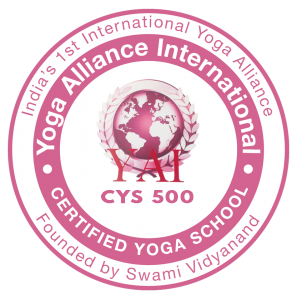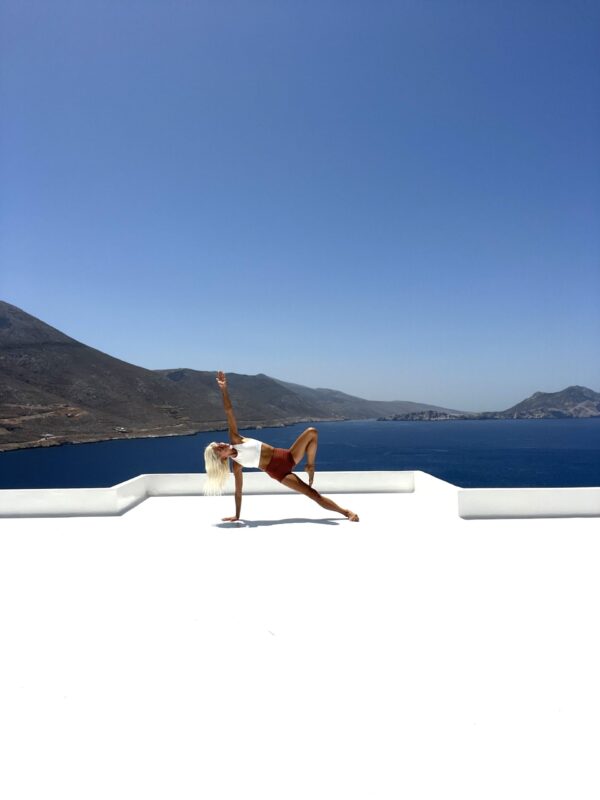Information


Yoga is a personal practice in which we connect all parts of our self, the physical, mental and spiritual bodies together. Although commonly known for the asanas/poses, yoga takes you much deeper. The more you practice and keep consistency, you will really get to understand yourself on a more profound level. The benefits of yoga are endless and it’s important to know that it can bring a different experience every time. If you are new to the yoga practice or are an experienced yogi, it’s always good to remind yourself of the following 5 things before starting your next practice.
Whether you are practicing a slow or a power focused flow, the most important thing to remember is that hatha yoga is about being gentle with our bodies. It’s not so much about the pose, as it is about your journey of getting into it. It’s about what you feel as you go deeper and not resist but instead surrender. Your yoga practice is about continuing to breathe and letting the flow guide you, working with your breath to coordinate the movements of the physical body. Yoga is always about opening yourself up to explore yourself, so there is no need to push and create strain onto your body just to reach a deeper level of a pose. Learn where your body is at that point and work towards bringing more balance for yourself within all three bodies, mental, physical and spiritual to sink in deeper and appreciating just how amazing you really are.
As a yoga teacher, I hear many people saying they can’t do yoga because they are not flexible enough. This is a self-limiting belief created out of fear and preconceptions, a restriction from which you can break free, today! Yoga does not require flexibility, it requires you to show up and work with your body to reach a certain level of inner and outer strength, clarity and balance. Flexibility is built over time, but always remember that not everybody can do the splits, or go into a full camel pose but there are always alternatives for every pose depending on where your body is at. Each body is different and yoga will help you understand just yours, where you are resisting and what you need to let go of and release in order to release the blockages and go further. Focus on working towards a more aligned, centred physical self, and not on reaching flexibility.

I love to start my classes with pranayama/yogic breathing exercises. Ujjayi pranayama, also known as the ocean sound breath or victorious breath, is a type of breathing technique in which you breathe in and out through the nose and constrict your throat making a slight sound (hence the name ocean breath). This has a calming, heating effect, perfect for warming up the body before you start your yoga session. You can do 5 deep breaths at the beginning of each practice and continue to use it throughout your class. Another useful pranayama technique is nadi shodhana, alternating the breath between the nostrils. Using one hand, bend your index and second finger onto the palm of the hand, and use the thumb for one nostril and the last two fingers for the other. Breath in through the most open nostril closing the other, block both nostrils and retain, then exhale through the other nostril. Alternate between the two and you can do this 10 times with each nostril always finishing up with the nostril you began with. Nadi shodhana brings balance between the left and right side of the body, the feminine and masculine. Throughout your practice, check in with your breathing patterns.
Yoga teaches us to let go of the ego and to connect with our consciousness. Here, there are no needs, no wants, no desires, but simply being in a state of existence. Keep an open mind throughout your practice, and find your intention. Why is it that you are practicing? There is no need to show off, to focus on poses which you cannot yet do, on bringing awareness to anything else, but your mind, body and spirit. Stay humble within your practice and even if you are an experienced yogi, you can never know everything. Remember that we are all students of life, that you can always approach a pose with a beginner’s mindset and discover yourself always. Breathe, surrender and let go of your fears, of the what if’s, of the need to live in the future. If you are open to completely experiencing the journey of your yoga lifestyle, learn to stay present, stay focused and be in the now.
At the beginning of each practice, set an intention for your practice that day. Sankalpa is a vow you set for yourself, going into the deeper meaning of life. This can be a statement that helps you connect to your true nature. Maybe there is something you would like to release and let go off, an experience that is no longer serving you. Setting an affirmation which you take with you throughout the entire session, reminding yourself of what it is that you are working towards for yourself, in your life can also be a good option. Whatever it is that you want to connect with in your practice, set that at the beginning and remind yourself of it for the duration of it. Yoga helps you find your grounding and your intention will always remind you of the why you are doing it. Focus, be clear and let the yoga experience unfold for you.
Yoga is a lifestyle and not a sport or fitness regime. It can have many great benefits on the physical, mental and spiritual body if you learn to let go and simply surrender. We are complete as we are, and yoga prompts us to look within and accept this, to understand ourselves from all angles and most importantly to learn to love every part of our body, mind and emotional self. Be kind with yourself, stay patient and keep disciplined.